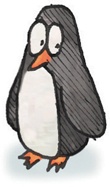Chapter 5. What Games Aren’t

Until now, I’ve been discussing formal game design—abstract simulations. I’ve also been pretty loose with the term “game,” conflating game systems with games. But we rarely see truly abstract simulations in games. People tend to dress up game systems with some fiction. Designers put artwork on them that is suggestive of some real-world context. Take checkers for example—abstractly, it’s a board game about entrapment and forced action, played on a diamond-shaped grid. When we say “king me”* in checkers, we’re adding a subtle bit of fiction to the game; suddenly it has acquired feudal overtones and a medieval context. Usually, the pieces have a crown embossed on them.
This is similar to word problems in math class. The fiction serves two purposes: it trains you to see past it to the underlying math problem, and it also trains you to recognize real-world situations where that math problem might be lurking.
Games in general tend to be like word problems. You won’t find many games that are pure unclothed abstractions.* Most games have more in common with chess or checkers—they provide some level of misdirection. Usually there are metaphors for what is going on in the game.
While metaphors are fun to play with, players can basically ignore them. The name of the unique checker piece that has made it to the other side is irrelevant, mathematically speaking. We could ...
Get Theory of Fun for Game Design, 2nd Edition now with the O’Reilly learning platform.
O’Reilly members experience books, live events, courses curated by job role, and more from O’Reilly and nearly 200 top publishers.

